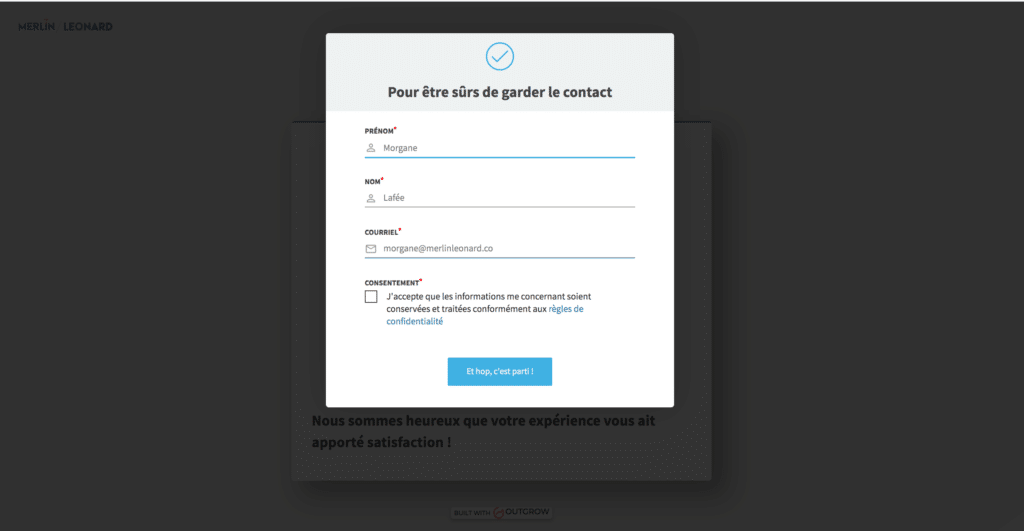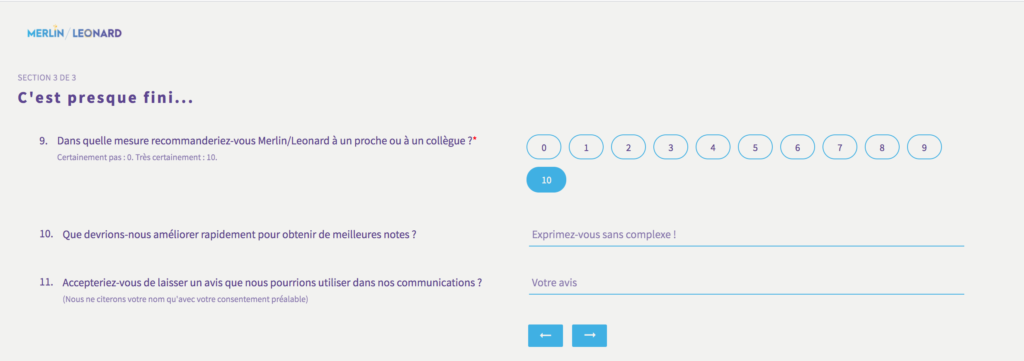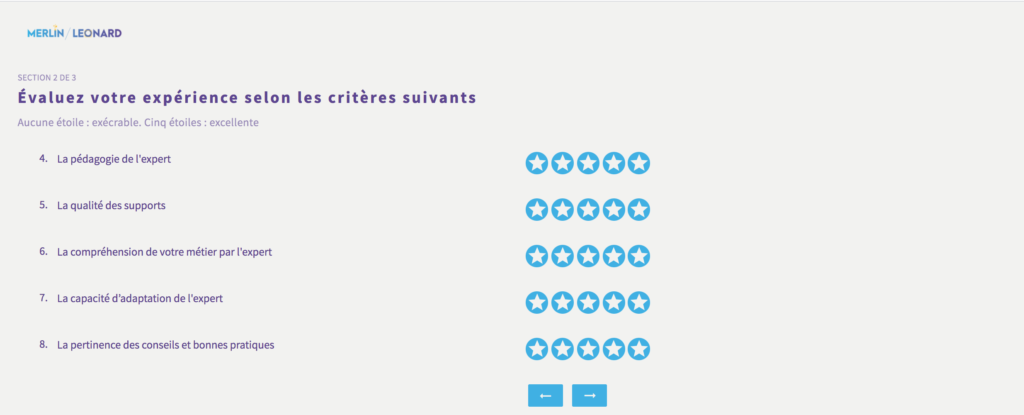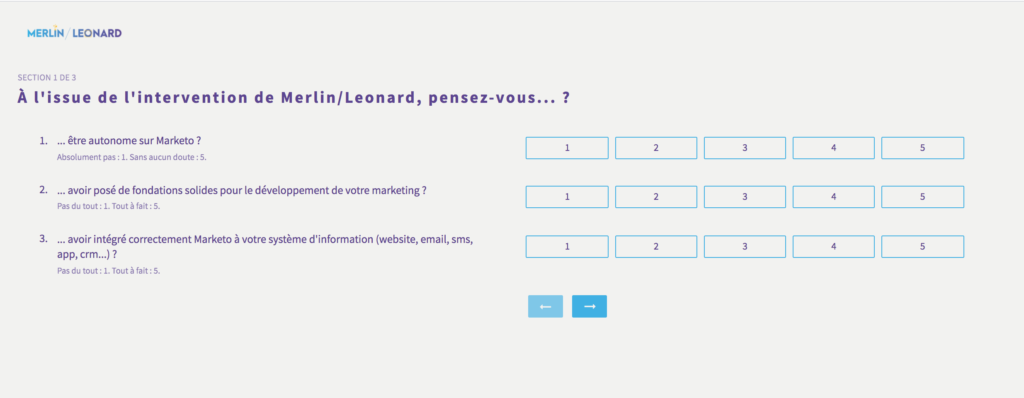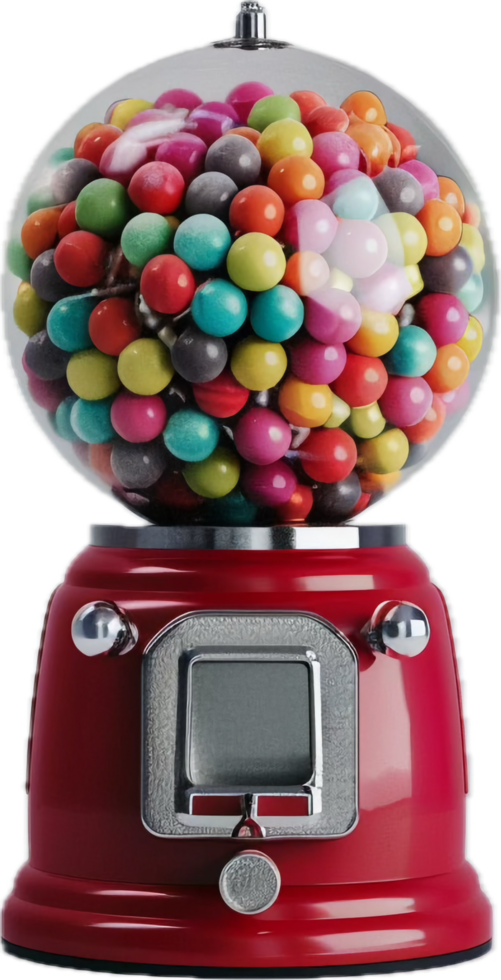Conversational marketing tools allow brands and businesses to improve the customer experience and attract new prospects through one-on-one conversations. Now that you know what conversational marketing is, find out what different solutions are available to you along the funnel.
Conversational marketing tools for better conversion
Email capture, personalization of the user experience or contests, discover which solutions will help you convert anonymous or known people who visit your website.
Conversion Rate Optimization (CRO) solutions
Ok, it’s a bit far-fetched to say that these solutions allow a “conversation”. But they do help it to happen, and we decided to focus on that too in this article.
These solutions allow you to optimize each step of the journey (especially web), to maximize the number of people who continue the journey with you.
As such, we will find among their features:
- The ability to listen to what the visitor is doing, and deduce behavioral data
- Glean information about him, thanks to his IP address
- Trigger more or less varied actions on the website
- By personalizing the first touch as much as possible
These solutions will allow you for example to:
- Show the best web page or the best section to your visitors and A/B test them
- Display pop-ups / pop-ins according to your behaviors (for example the pop-up inviting you to subscribe to the newsletter when you are about to leave the site)
The lotteries
Offering a chance to win to the Internet user is a very powerful way to enter into communication, start a conversation and therefore convert to promote the act of purchase. Contests are great conversational marketing tools that increase engagement and help collect personal information or emails.
Indeed, a prospect who wants to get a reward will be more inclined to share with you his personal information and to fill out a contact form. In addition to email, you can collect a lot of other information (last name, first name, address, etc.). However, be careful to stay in compliance with the GDPR!
On his blog Captain Marketing, Stéphane Truphème has integrated a Wisepops pop up with a lottery allowing you to win an ebook. Go and try it here : https://www.captainmarketing.io/blog/
Contextualized pop ups
Contextualized pop ups can be used to stimulate conversion, encourage a move to action, propose offers or collect a comment or email.
There are several types of pop ups depending on the navigation context:
- You can display a pop up window when a visitor arrives on your web page;
- When a customer adds an item to the shopping cart to offer new products or indicate promotions;
- When a customer visits your blog, you can display a pop-up window proposing to subscribe to a newsletter;
- When a visitor leaves your site, this is called the exit pop up. You can retain them by offering them a discount for example.
Page optimization solutions
Landing page optimization is essential in your conversational marketing campaign. This page, on which your visitors will land after answering a quiz, chatting with a chatbot or making a simulation on a calculator, is an essential tool to increase your conversion rate.
To boost the conversion rate of a landing page, there are many online tools and solutions. These platforms allow you to easily generate landing pages and measure their effectiveness, using statistical tools and user behavior analysis. You can then easily adjust or customize your pages to improve their conversion rate.
Here are two very intuitive digital solutions to help you improve page optimization:
- Instapage: the best known post-click optimization solution on the market. It allows you to increase conversion through page design, personalization and optimization.
- Hotjar: a behavioral analysis tool that allows you to visualize engagement using heatmaps or session records for each visitor, for example.
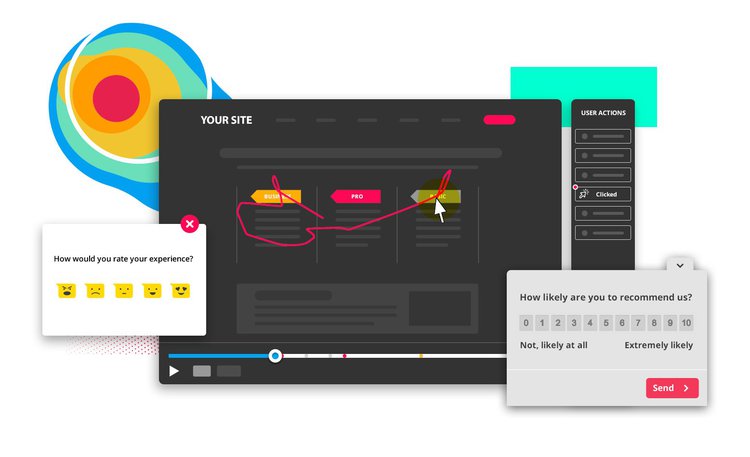
Example: Marketo’s Web Personalization solution
Marketo Web Personalization is a targeting and personalization platform that helps engage prospects on your website in real time, based on their profile and habits.
This conversational marketing solution allows you to personalize your site with content, messages and actions based on:
- Browsing behavior;
- Information deduced from the visitor’s IP address such as location, company or industry;
- Referring URLs;
- And if the person is known to Marketo (a customer or a subscriber to the newsletter for example) you have access to all the customer knowledge of Marketo to personalize your actions.
Easy to implement, the web personalization helps to target your customers on all the channels in a synchronized way: website, advertising, social networks, email,… You will be able to display your offers and communication at the right time and place:
- Show on your homepage your Nantes event for people in the west of France and not foothers;
- Automatically present your special Pharma white paper to visitors from this sector and not to others;
- Have a personalized message for your customers (why not per customer, but then it’s a bit … worrying).
Chatbots and chatboxes: the stars of conversational marketing
The chatbot, also called virtual assistant, is the most famous conversational marketing tool. You certainly know Lara from Meetic, Oui Bot from SNCF or Freddy from HelloFresh?
Chatbot is a word that comes from the English chat (chat) and bot (robot). The objective of the chatbot is to answer all the requests and questions of the Internet users, by simulating a conversation from human to human.
Chatbot vs chatbox: don’t make the mistake anymore!
Be careful not to confuse a chatbot with a chatbox!
The chatbox is the dialogue window (usually located at the bottom right of the screen) that allows you to interact with a chatbot, but also a human. It is in fact the interface in which the conversation between the user and you will be displayed, via a robot or the customer service for example.
The chatbox can also contain direct access to a search tab, an appointment booking tool, the latest brand news or an online event. Take a look at the Merlin/Leonard chatbox to get an idea…
Key features of chatbots / chatboxes
Here are the main features offered by chatbots / chatboxes :
- Ability to alternate chatbot / chatboxes mode according to availability, schedules…
- Management of the routing of conversations to the right resource, according to its skills;
- Ability to handle hundreds or thousands of conversations;
- CRM and workflow management of the conversation to be able to transfer it to other colleagues without losing the context;
- Integration with a knowledge base to easily respond to a subject already covered;
- Recognition of contacts that have already been made;
- Richness of the conversation: possibility to use images, emojis, files… Ability to switch to video and chat mode and take control of the user’s screen;
- Powerful chatbot scenarios, ability to integrate with a CRM or marketing automation database to further personalize the scenario;
- Instant translation of conversations and number of languages managed;
- Possibility to engage and continue the conversation on different media: web, facebook, twitter, shared email addresses…
Why and how to use a chatbot?
In most cases, brands use a chatbot to extend customer service activity and increase the responsiveness and interactivity of conversations. Some of the most common applications of the virtual assistant include:
- Practical advice;
- Assistance in the purchasing process;
- Online booking;
- After-sales service;
- Appointment setting.
Today, chatbots allow prospects to find information or answers more quickly, without having to contact a company or brand representative directly.
Conversational marketing: examples of chatbot use
- The SNCF Chatbot helps you find train tickets in just a few seconds. It’s a reservation and purchase assistant.
- Sephora’s Chatbot is specialized in customer advice. Its objective is to offer customers personalized products or tutorials based on a series of questions.
- In the field of news, the 20 Minutes chatbot offers direct access to a selection of articles, based on your request and even your horoscope!
Which conversational marketing tools to build a chatbot?
- Drift: one of the most popular and powerful chat, integrated messaging and email management solutions for marketing teams. Beware, a solution with multiple features also comes with a high price tag!
- Intercom: this solution allows you to optimize the exchange with customers to promote acquisition, conversion, feedback or support management;
- Chatbot: a conversational marketing software that creates versatile choice assistants and smooth conversational experiences.
- Xeno, our favorite: a very complete French solution that covers chatbox, chatbot, appointment management, knowledge base and natively integrated with Marketo. It was Léonard who participated in the implementation of this integration, of course!
Top of the funnel : quizzes and assessments
Quizzes, calculators, comparators or self-diagnostics are very effective conversational marketing tools, especially if they are positioned at the top of your conversion funnel.
These interactive solutions respond to the problems encountered by your prospects during the awareness phase. They answer questions like, “What kind of manager are you?”, “What is your level of web literacy?”, “What is your monthly credit payment?”
All of these marketing tools encourage conversation around topics that will immediately interest your customers and prospects. They also allow you to know a little more about your site visitors, through more personal questions.
Some examples of the use of calculators
The calculators provide a personalized answer, calculated based on the information shared by the user.
Here are some examples:
- How much can you save by making your own marketing visuals?
- How much should you invest in your creative software?
- What is the ROI of a marketing automation solution?
Calculators are very useful tools to attract prospects and qualify them according to the answers they will provide.
-
Examples of conversational marketing: quizzes and calculators at Merlin/Leonard
-
Which features for quizzes and calculators?
Discover the different features of the calculators and quizzes:
- Customize tools to showcase your brand;
- Conversion rate measurement at each stage of the funnel;
- Detailed statistics for each user;
- Personalized journey based on answers provided;
- Display of conditional messages based on the test result;
- Use of dynamic graphics to increase interactivity;
- Simplified creation of complex calculation formulas;
- Integration in full screen, in Iframe, in pop-up window or in a chatbot;
- Segmentation of prospects and personalized email marketing;
- Flexible and targeted lead generation.
How to use the online quizzes and self-assessments?
Self-assessments or quizzes offer the client recommendations or a diagnosis based on the score generated by the answers to the questions asked.
Here are some examples of quizzes to adapt:
- Which laptop do you need?
- What style of manager are you?
- At what stage of digital maturity is your company?
Quizzes help you generate more traffic to your website, based on a fun experience that promotes proximity and loyalty.
Why use surveys and polls?
Surveys or polls allow you to collect information to better understand your targets and customers. It can be a satisfaction survey, a needs study or an NPS questionnaire.
What conversational marketing solutions for quizzes and assessments?
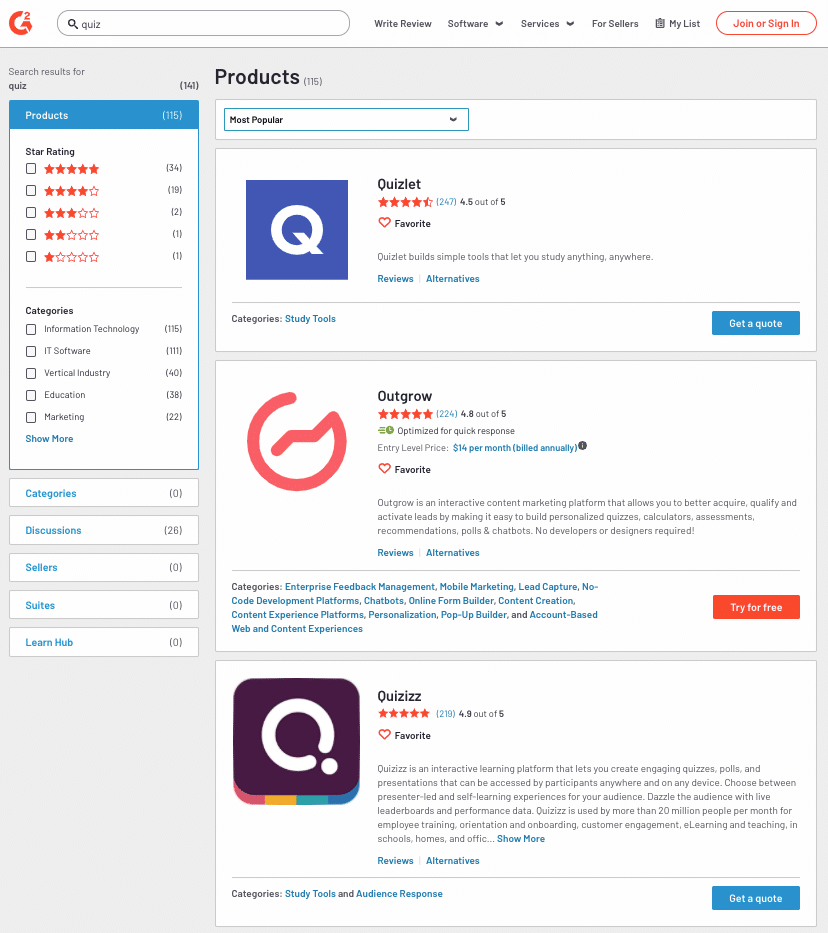
- Outgrow: this conversational marketing software has many benefits. You can create simulators, quizzes, evaluations, surveys, recommendations and even a chatbot!
- SurveySparrow allows you to create and share polls and surveys on a site, mobile site or chatbot.
- Typeform is a simple and ergonomic tool to easily create numerous surveys to be integrated on a website.
Don’t forget the open access knowledge base!
If creating a truly efficient and complete knowledge base is a real challenge, building one is nonetheless essential.
The knowledge base allows a customer or a prospect to find an answer to his question autonomously, without having to ask for a customer service or a choice assistant. The most popular marketing tool of this self-service communication channel is the FAQ, the famous Frequently Asked Questions. It is the favorite knowledge base of Internet users!
What is a knowledge base and how does it work?
A self-service knowledge base functions as a content library, in which a user will find information about:
- A product ;
- An offer ; A theme ; A topic
- A theme;
- A particular subject.
This information base must contain articles, tutorials or help intended for Internet users. The proposed contents allow them to solve their problem or to find an answer in total autonomy.
You will thus be able to unload the customer support and make your company or your site more reactive, by improving the user experience.
What conversational marketing solutions for knowledge bases?
Here are some examples:
- Document 360: this software makes it easy to create a knowledge base associated with an AI search engine.
- Freshdesk: this solution helps build a true self-service knowledge and experience portal.
- KnowAll is a very powerful knowledge base creation tool designed for WordPress.
Conclusion
As we just saw, conversational marketing is not limited to chatbots or other choice assistants. There are many tools and platforms that can help you improve your conversion rate by engaging your prospects and customers in conversation. Now it’s up to you to choose the technologies that will allow you to develop an omnichannel strategy that is both interactive and efficient.
Want to deploy a true conversational marketing strategy across all your communication channels? Merlin/Leonard can help you deploy your conversational marketing, marketing automation or growth hacking strategies. Do not hesitate to contact us to learn more.



